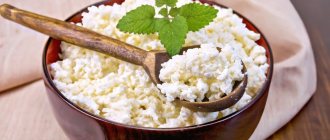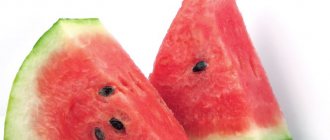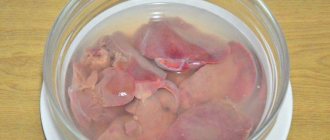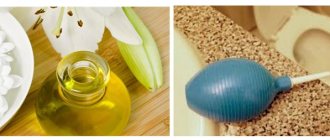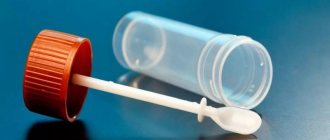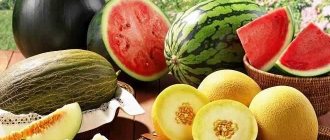17.01.2018
If a patient complains about the digestive system, the gastroenterologist prescribes various diagnostic techniques that help identify the cause and make the correct diagnosis. A fairly common and effective procedure in this case is FGDS.
Fibrogastroduodenoscopy is a direct visualization method that allows you to assess the condition of the mucous membrane of the stomach, esophagus, and intestines. The examination is carried out using an endoscope. This device is a thin tube with a built-in camera. For adults, a tube with a diameter of about 1 cm is used, for children the diameter is smaller. On the monitor, the doctor sees the condition of the tissues, the presence of inflammation, neoplasms, and damage. The equipment also allows for treatment and collection of biomaterials for study in the laboratory.
Indications for FGDS
Examination and treatment of the stomach and duodenum using endoscopic equipment is prescribed:
- For abdominal pain that is regular.
- In case of discomfort and heaviness in the abdomen.
- For heartburn that does not go away for a long time.
- For anemia.
- In case of nausea and vomiting for a long time.
- When belching occurs.
- For problems with appetite.
- With sudden weight loss.
- For diseases of the liver, gall bladder.
- Before preparing for surgical interventions.
- To exclude ulcers, cancer, gastritis.
The examination is also recommended for chronic gastrointestinal diseases, to assess the effectiveness of the treatment, and to prepare the patient before a number of surgical interventions.
Recommended Diet
A condition for successful invasive diagnostics is that the patient follows a certain diet before FGDS. It is maintained for 3 days. During this short period, provided that all recommendations are followed, the stomach will be cleansed as much as possible. The patient must properly coordinate his diet.
A detailed menu will be created by your doctor, who will definitely tell you what you can eat before gastroscopy and how many hours after FGDS you absolutely cannot eat. Among the most popular tips is to eat foods that contain well-ground ingredients. This will avoid irritation of the mucous membranes, and the doctor will receive a reliable picture of the disease.
What is allowed to eat during the examination?
Foods should be eaten before gastroscopy of the stomach or intestines only in warm, stewed, steamed and baked form. Gastroenterologists advise giving preference to light foods that are quickly digested and low in fat. The list of permitted products includes:
- well-cooked cereals;
- lean fish;
- white poultry fillet;
- baked fruits and vegetables;
- low-fat cottage cheese;
- compotes, weak green tea, mineral water.
You are allowed to include porridge in your diet. It is important that it is not damp.
Prohibited Products
A few days before the FGS, it is forbidden to eat spicy food, dishes seasoned with various spices and herbs. Gastroenterologists recommend refraining from drinking alcoholic beverages. During FGDS, you should also not consume the following foods:
- chocolate confectionery;
- fresh vegetables and fruits, as they are rich in coarse fiber;
- seeds (pumpkin, sunflower) and nuts;
- dairy products;
- legumes (beans, peas, lentils, etc.);
- fatty meat and fish;
- rich flour products and brown bread.
Prohibited drinks include:
- packaged or natural juices;
- coffee;
- sparkling water;
- jelly.
In addition to the products listed above, the consumption of smoked meats, pickled foods, fast food, and fried foods is strictly prohibited. This is a harmful and difficult to digest food that you should definitely exclude from your menu. This recommended diet before gastroscopy of the stomach will fully prepare your body for FGDS.
In addition, those patients who already have gastritis and ulcers are advised to follow a dietary diet for several weeks between the first and repeat examinations. This will give the doctor the opportunity to get a complete picture of the health of the gastrointestinal tract and monitor improvements in health.
Side effects
Typically, FGDS is well tolerated by patients, but sometimes after the procedure the following are noted:
- Feeling of bloating, fullness in the intestines.
- Pain in the stomach, lower abdomen.
- Sore sensation in the throat.
The discomfort goes away during the day; if necessary, you can take a drug with an antispasmodic effect.
If the symptoms have not gone away the next day, or there is an increase in temperature to 38°C or higher, sharp pain, stomach cramps, vomiting, diarrhea, then you should consult a doctor.
Other types of training
Moral attitude is very important before research. Usually, the doctor himself tells the patient everything. Feel free to ask questions that interest you. The answers you receive will make you feel better.
If an adult has a predominant feeling of panic or increased excitability, the doctor may prescribe sedatives.
In case of cardiovascular pathologies, for example, hypertension, respiratory failure, their premature correction is important.
This is due to the fact that during the FGS process complications may arise on their part. The patient will have to prepare for endoscopy in the hospital. Before FGDS, local preparation is carried out, which includes the following points:
- The skin and mucous membrane of the patient's oral cavity are examined in order to exclude tonsillitis, jams or cracks. If such problems are identified, then the FGS is postponed.
- To reduce foaming in the stomach and intestines, the doctor prescribes the drug Espumisan, which should be drunk 5 minutes before the start of the test.
- To reduce pain during insertion of the endoscope, the patient is given local anesthesia. To do this, the throat is treated with lidocaine in the form of a spray.
Local preparation takes place under the guidance of a physician. Do not forget to inform your doctor about the presence of chronic diseases.
Possibilities of FGDS
During the examination, the doctor assesses the condition of the mucous membranes of the stomach, esophagus, and duodenum. Foci of inflammation, tissue ulceration, and neoplasms are clearly visualized on the screen.
In addition, during the procedure you can:
- Remove the foreign object from the stomach.
- Get rid of benign formations.
- Perform a biopsy.
- Administer the necessary medications.
- Stop bleeding in the stomach.
What does improper preparation and standard complications lead to?
If the patient’s preparation for fibrogastroduodenoscopy was incorrect, the result may be erroneous. In addition, nausea and vomiting, belching and bloating may occur. In case of low visibility, due to improper preparation, injuries to the mucous membranes of the esophagus and stomach are possible.
The most severe and rare complications include asphyxia, but this occurs mainly if the patient took drugs that, together with anesthesia, caused a severe allergic reaction.
Standard complications include:
- Pain in the larynx. This occurs due to mechanical damage to the organs by the tube, especially when breathing improperly and ignoring doctor’s advice. Unpleasant sensations may occur during swallowing for several days. To speed up healing, it is better to avoid irritating foods.
- Bleeding in the esophagus, stomach, intestines in places of injury to the walls.
- Perforation. Occurs rarely.
- Laryngotracheitis, hoarseness.
- Allergic reactions.
- Jaw injuries are a very rare occurrence.
- Pain at the biopsy site.
- Injury to the gastrointestinal tract. May occur with sudden movements of the patient.
Preparation
Preparation for EGD of the stomach begins several days before the procedure. Compliance with the recommendations will make diagnostic measures more informative, help conduct research without visualization difficulties and accurately identify possible pathologies.
Detailed information about preparation is provided to the patient by the gastroenterologist at the preliminary consultation. General recommendations are given below.
3 days before the test
Three days before the examination, it is recommended to exclude the following products from the menu:
- Seeds, nuts, legumes.
- Spicy, smoked, salty foods.
- Fried, fatty foods, mayonnaise.
- Carbonated drinks, alcohol, juices.
- Chocolate, coffee, ice cream.
- Baked goods made from wheat flour.
- Fruits and vegetables rich in fiber: cabbage, radishes, raw carrots. It is also not recommended to eat plums, apricots, tomatoes, and beets.
- Dairy products.
Preparation for FGDS is based on a diet that includes:
- Boiled or baked meat and vegetables.
- Rice, buckwheat, oatmeal porridge with water.
- Steam omelette.
- Crackers, dryers, biscuits.
- Compotes, jelly.
If the patient takes medications as part of the treatment of chronic diseases, the course of treatment is not interrupted, all recommendations are followed as prescribed.
It is advisable for the patient to quit smoking during the preparation period. Nicotine increases the intensity of gastric juice production, exacerbates the feeling of hunger, worsens the condition of blood vessels, causes spasms, and increases the urge to vomit.
Preparation for the examination also implies stabilization of the patient's chronic diseases. This applies to hypertension, diabetes, cardiovascular pathologies and other diseases that require constant treatment. During periods of exacerbation, the procedure is not performed. All prescriptions must be mentioned to the gastroenterologist at the consultation before FGDS of the stomach.
The day before the procedure
The study is carried out on an empty stomach. The last meal is allowed no later than 8 hours before FGDS. This should be a light dinner. If the patient has digestive problems, then at least 12 hours should pass from dinner to the examination.
Patients with diabetes are allowed to drink sweet water or tea as needed, but no later than 5 hours before the procedure.
If there is a tendency to bloating or difficulty with bowel movements, then preparation for the procedure includes taking carminatives and cleansing the intestines with an enema or laxative. The patient must also notify the doctor about this.
On the day of the FGDS
- If the study is scheduled for the first half of the day, then you are not allowed to have breakfast, drink drinks or water. If you spend the afternoon, you can drink sweet tea in the morning.
- If the patient receives medications in the form of tablets and capsules, then, if possible, their intake is postponed until after the procedure. If medications that need to be absorbed or injections are used for therapy, then they are taken as usual. You must be informed about all medications taken before starting the study.
- No smoking.
It is recommended to wear loose-fitting clothing, without putting pressure on the abdomen and stomach. It is better to leave the neck free.
What should you do before endoscopy?
FGS is not a rare study. It is often prescribed to patients in order to examine the stomach, its mucous membrane and take a biopsy for analysis. Endoscopy is performed for 5 to 20 minutes. All steps have been worked out by doctors, there is an action plan for unforeseen situations, so no need to worry.
The main task of preparation is to follow all the doctor’s instructions.
Preparation for EGD of the stomach has several important recommendations, which consist of the following stages:
- Home preparation.
- Morning preparation before endoscopy.
- Moral attitude.
You should not ignore any of the above stages, as the consequences may be unfavorable.
How is it carried out?
- The examination is carried out in a lying position on the left side.
- Patients using dentures need to free the oral cavity from foreign objects.
- Before the examination begins, the throat is irrigated with a local anesthetic. This reduces sensitivity and helps weaken the gag reflex.
- When the anesthetic begins to take effect, a clamp is inserted into the mouth, which prevents the jaw from accidentally closing.
- The doctor places the end of the endoscope at the root of the tongue and asks the patient to swallow. This way the tube enters the esophagus and moves along it. This is the most unpleasant moment of the procedure; then the feeling of discomfort goes away.
- The duration of the diagnostic test is about 15 minutes. If it is planned to take a biopsy, administer medications, or remove formations, then the time for performing an FGDS increases to half an hour.
What does improper preparation and standard complications lead to?
If the patient’s preparation for fibrogastroduodenoscopy was incorrect, the result may be erroneous. In addition, nausea and vomiting, belching and bloating may occur. In case of low visibility, due to improper preparation, injuries to the mucous membranes of the esophagus and stomach are possible.
The most severe and rare complications include asphyxia, but this occurs mainly if the patient took drugs that, together with anesthesia, caused a severe allergic reaction.
Standard complications include:
- Pain in the larynx. This occurs due to mechanical damage to the organs by the tube, especially when breathing improperly and ignoring doctor’s advice. Unpleasant sensations may occur during swallowing for several days. To speed up healing, it is better to avoid irritating foods.
- Bleeding in the esophagus, stomach, intestines in places of injury to the walls.
- Perforation. Occurs rarely.
- Laryngotracheitis, hoarseness.
- Allergic reactions.
- Jaw injuries are a very rare occurrence.
- Pain at the biopsy site.
- Injury to the gastrointestinal tract. May occur with sudden movements of the patient.
Fibrogastroduodenoscopy under sedation
To reduce discomfort in the patient and during upcoming long-term manipulations, FGDS can be performed with immersion in medicated sleep.
Also indications for sleep research are:
- Strong gag reflex.
- Psychomotor impairments that prevent you from remaining still during the examination.
- Patient's wishes.
Emergency EGD is not performed during sleep. The procedure is allowed for children from 7 years of age.
Preparing for such a test is different from preparing for a regular procedure. A consultation with an anesthesiologist and a number of tests are added.
Before the examination:
- A medical history is taken and a decision is made on the possibility of using a sedative.
- A general blood test, tests for HIV, hepatitis, and fluorography are performed.
Immediately before the procedure, the patient needs to remove jewelry and contact lenses. Next, the drug is administered, the patient falls asleep and the examination of the stomach begins.
Sleep time is calculated taking into account upcoming events. After waking up, you usually feel normal, without any significant discomfort. After 1 hour the patient is allowed to go home.
Preparation for gastroscopy under anesthesia
If you are planning examinations with sedation or anesthesia, it is strictly necessary to be on an empty stomach and not drink water for at least 3 hours before the examination. Features of preparation for gastroscopy are given above.
Tests for anesthesia (the need is determined by the anesthesiologist and the corporate requirements of the clinic; the Ministry of Health does not regulate the availability of these tests before endoscopic examination):
- HIV
- Hepatitis B and C
- Syphilis
- ECG (not more than 10 days old)
print version
TagsGastroscopy Health Endoscopy
"VIP Academy": European standards of medicine
The multifunctional uses Japanese equipment. We carry out diagnostics, treatment procedures, biopsies with further study of samples in our laboratory.
Endoscopes have high resolution, which makes it possible to examine mucous membranes with several times magnification to detect pathological changes up to 1 millimeter in size. The results are recorded on digital media.
We have doctors with more than 10 years of experience who specialize, among other things, in working with children.
Based on the results of endoscopy, you can consult a gastroenterologist and undergo a course of treatment from leading specialists in Nizhny Novgorod.
How to prepare for fibrogastroscopy?
The preparatory process for FGDS is not particularly complicated, but it does require careful implementation of all of the above points. Firstly, checking the mucous membranes of the organs should be carried out strictly on an empty stomach - even a small amount of food will cause a copious secretion of gastric juice. This will not only prevent you from getting informative results, but can also cause nausea and even vomiting.
Therefore, the patient needs to check in advance with the doctor or in the diagnostic office how long before the examination he should not eat or drink. As a rule, you need to abstain from food for at least 10–12 hours and from drinking liquids for at least 2 hours. Optimally, if FGS is scheduled for the morning, then the last meal should be no later than 18.00, and in the morning you can drink a glass of still water or weak tea. When preparing for FGS, you should not eat slowly digestible foods - nuts, seeds, chocolate
Dinner on the eve of a gastroscopic examination should be light and quickly digestible, and for 1-2 days before the scheduled examination, you should avoid foods that are slowly digested - chocolate, nuts, seeds. The second important point for a certain group of patients will be an absolute cessation of smoking at least 4–5 hours before FGDS. This is due to an increase in the secretory function of the gastric glands when smoking just one cigarette.
On the day of the examination, in the morning, in addition to the above, you should not brush your teeth or chew gum, as these actions also lead to an increase in the secretion of gastric juice. If the person being examined is taking a course of vital medications, then you must first consult with a doctor about the possibility of stopping them for several hours.
If you have an allergic reaction to the anesthetic used, be sure to report it in advance so that the diagnostician can offer an alternative option. It is also worth warning about possible difficulties with swallowing the endoscope - in such cases, the procedure is carried out under anesthesia.
There are several types of anesthetic drugs used, differing in properties and effects on the body. Familiarize yourself in detail with the options and features of performing FDGS under anesthesia
Here.
What to do before a colonoscopy?
It is necessary to cleanse the intestines. This is achieved through diet and cleansing preparation. Previously, they did an enema, but now they have moved away from this practice. Medicinal bowel cleansing is carried out.
This method is more convenient, since 3-4 enemas are required to completely cleanse the intestines, and this contributes to dysbacteriosis and is a source of significant discomfort. Instead, one of the medications prescribed by the doctor is taken according to the regimen.
Diet before colonoscopy
Two days before the procedure, if there is no constipation, the patient switches to a slag-free diet:
- Not allowed - black bread, vegetables, fruits, legumes, greens, cottage cheese.
- You can - eggs, semolina, broth, boiled (meat, sausage, fish), kefir, cheese.
On the day of the procedure - only liquid food (broth). Drinks include water and tea. You can take medications, with the exception of iron-containing drugs, antiplatelet agents (aspirin), anticoagulants (warfarin) and sorbents (activated carbon).
Peculiarities
The individual characteristics of the preparation should be explained by the doctor. We will just look at the main points.
- How to prepare for gastroscopy in the morning. Typically, the endoscopist begins the appointment around 9 am. Therefore, if you were prescribed the procedure in the morning, your last meal should be at 19-20 pm the previous day. Although it is recommended not to eat 8-10 hours before, the resulting gap is explained by the fact that after dinner you will go to sleep at night around 22 pm and have a good rest. If you have dinner at 12 am, healthy sleep will occur no earlier than 2 am.
- How to prepare for a gastroscopy in the afternoon. If the procedure is scheduled around 1-3 p.m. or in the evening, then a very light breakfast is allowed at 6-7 a.m. You should not eat food that coats the walls of the stomach, such as oatmeal. Limit yourself to a baked apple with a glass of weak tea.
- If a biopsy is planned. This procedure does not require a special approach. However, you should not take blood thinning drugs : aspirin (acetylsalicylic acid), warfarin, pentoxifylline, cardiomagnyl, rheopolyglucin, etc. You should avoid taking Citramon, as it contains not only caffeine, but also acetylsalicylic acid.
- If FGDS simultaneously with colonoscopy. This combination is called combined diagnostics. It is performed only under anesthesia. Preparation begins 4 days before the study: diet described earlier; fasting for 12 – 14 hours before the procedure; Avoid drinking an hour before diagnosis; on the eve of the study, Fortrans or an enema is prescribed.
For patients with diabetes and bronchial asthma
If you suffer from bronchial asthma, use your inhaler on a schedule. You should also inhale one dose of the drug 5-10 minutes before the procedure. Do not use nebulizers before the procedure, as they may stimulate the formation of bronchial secretions. Take your inhaler with you.
Patients with diabetes must agree in advance on the exact time of the procedure , since insulin intake depends on this. If the procedure is in the morning, the patient does not eat, but takes food with him. You should also take insulin with you. After the procedure you should eat. When performing fibrogastroduodenoscopy during the day, the patient has breakfast and receives a dose of insulin according to his usual schedule. Then the procedure is carried out after 4-5 hours.
After colonoscopy
If the procedure is performed under anesthesia, the patient must be picked up from the clinic after a couple of hours by an accompanying person. If this is not possible, you should not go home on your own. It is better to use a taxi.
After the procedure you should avoid:
- heavy foods, coffee, alcohol;
- transport management;
- dangerous sports;
- significant physical activity;
- work that requires increased attention.
You can eat and drink only 40-60 minutes after the examination.
Diet - gentle, fractional, fortified:
- Smoked meats, canned food, sweets, chocolate, and bread other than bran are not allowed
- You can eat low-fat fish, cottage cheese, yogurt, kefir, milk, steamed vegetables and fruits.
For the fastest rehabilitation at home, you need to follow a gentle regimen and monitor your condition (if you have a fever and pain, consult a doctor). In some cases, herbal medicine and medications are prescribed. Do not take aspirin or warfarin (they interfere with blood clotting). You must follow medical recommendations.

